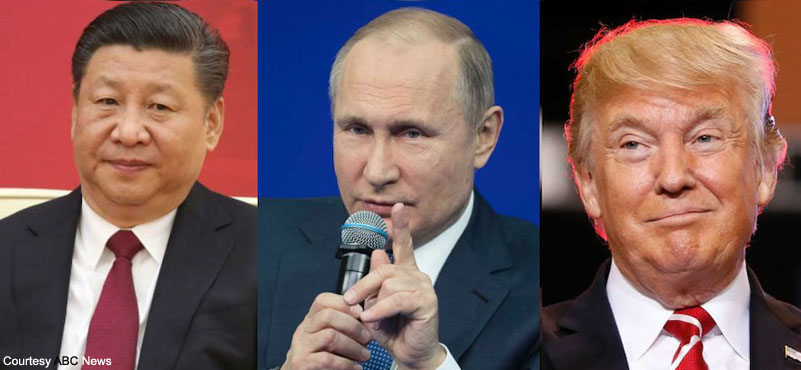In the 21st Century, power is fought as much in the realm of words and images as in the field. Strategic messaging has become a weapon system in its own right. The United States, Russia and China are locked not only in military rivalry but in a battle of narratives through strategic messaging. Each is trying to script how the world sees them, how their own people understand sacrifice, and how rivals second-guess intent. Speeches, purges, propaganda clips, what used to be background noise now sit at the heart of strategy.
America: The Stage at Quantico and a Crisis in Command
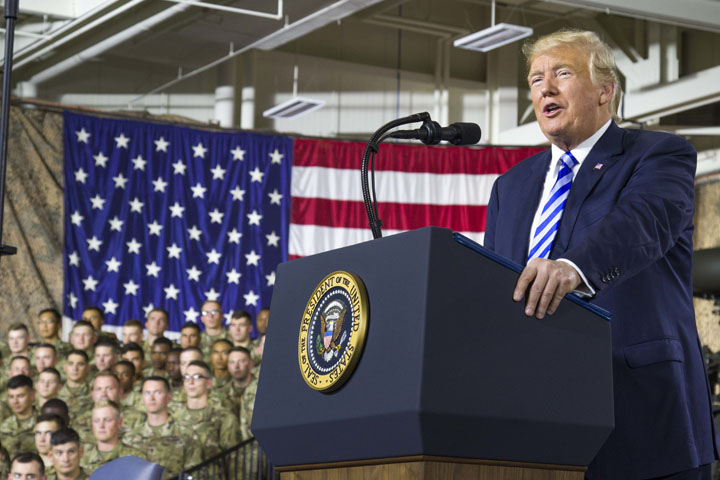
In September, President Trump turned Quantico into a campaign stage. His generals, lined up in the hall, away from their command posts, were not treated as professionals but as props. The speech at Quantico was not just another moment of political bluster. It was a revealing episode that exposed the extent to which America’s military is being drawn into partisan spectacle. By treating cities as battlegrounds, romanticising outdated ships, trivialising nuclear weapons, and presenting falsehoods as fact, Trump blurred the distinction between the professional duties of the armed forces and the partisan instincts of the commander-in-chief. That is not leadership. It is theatre at the expense of security, and the uniformed audience had little choice but to applaud.
Trump hailed the return to the name “Department of War,” claiming it would somehow “stop wars.” The irony was striking. To elevate war as the central identity of America’s defence establishment is to ignore decades of doctrine that prioritised deterrence, alliance-building, and conflict prevention. That is a dangerous message to send at a time of global volatility.
What made the episode worse was the pressure applied behind the curtain. Defence Secretary Pete Hegseth openly said generals who disagreed with him should quit. Soon after, General Thomas Bussiere’s who had been leading the Air Force Global Strike Command and was possibly nominated to be the next Air Force Chief, resigned. Earlier in Aug, General David Allvin, Chief of Staff of the Air Force, who still had time left in his term, was nudged into early retirement. In other words, dissent was no longer professional advice; it was disloyalty.
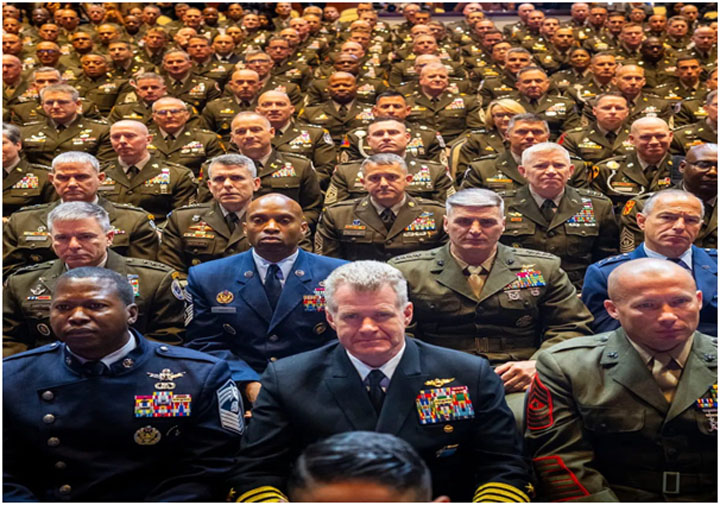
That message bleeds into how the United States is seen abroad. To allies, it looks like the politicisation of the very institution meant to embody professionalism. To adversaries, it suggests dissent and that internal discipline may crumble under pressure. For ordinary Americans, it erodes faith in the idea that their armed forces stand above partisan spectacle. Washington’s is fraying at the edges.
Russia: The Valdai Discussion and Crowbar Doctrine
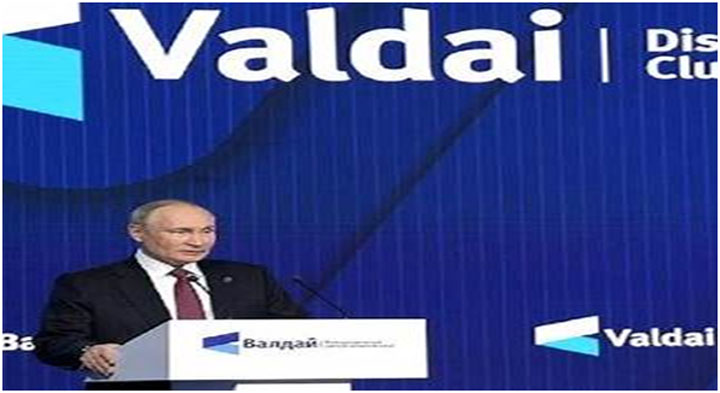
Vladimir Putin’s speech at the Valdai Discussion Club in Sochi carried the cadence of a statesman seeking to define an era, laced with a turbulent multipolar world, western hegemony, and the calculations of a wartime leader preparing his country for a prolonged struggle. They were an indication of how Moscow sees the future balance of power, the war endurance effort, and the vulnerabilities of the West.
The speech was built around a simple but forceful metaphor. “There is no counter to a crowbar except another crowbar,” Putin said, presenting power as a blunt tool that inevitably invites a matching response. He cast the struggle in Ukraine as a direct outcome of Western hegemony, insisting that attempts by Washington and its allies to enforce absolute dominance had produced a multipolar backlash. In this, he clarified, Russia is not the aggressor but the counterweight, forced to pick up its own crowbar to balance the blows of the West. What makes the metaphor a dangerous escalation is that Western escalatory actions, like the long-range missiles, advanced drones, and expanded sanctions, will be met with reciprocation. For Europe, this is a dangerous spiral in an effort to balance deterrence with escalation.
He used the platform to project strength in a war that has ground into attrition. Gains in Luhansk and Kupiansk were paraded as evidence. Ukrainian counter-offensives were dismissed as costly failures. He claimed 45,000 Ukrainian casualties in a month. The numbers are likely inflated, but accuracy is not the point. Narrative is. Russia wants its own citizens to believe time is on their side, and it wants Europe to doubt its staying power.
Strikingly, Putin assigned responsibility for prolonging the war not to Washington but to Europe. He claimed that European leaders must bear the blame for failing to stop hostilities and warned that Russia would respond to the militarisation of the continent. This framing attempts to drive a wedge between European capitals and Washington. It also seeks to exploit Europe’s own vulnerabilities: rising energy costs, migration pressures and political instability.
The Valdai speech was not theatre for its own sake. It was a strategic broadcast. Putin wants to present Russia as unbowed, as a power that has absorbed sanctions, defied isolation and continues to gain ground in Ukraine. He wants Europe to doubt its endurance and the West to question its unity. He wants his own people to believe that their sacrifices are bearable and that the outcome is inevitable.
China: Propaganda, Perception and the Silent Game
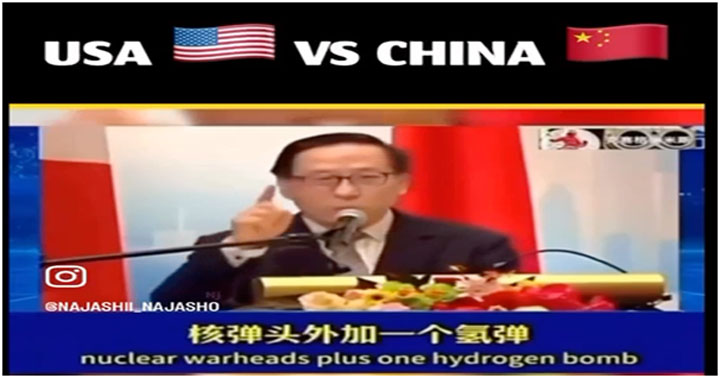
China’s tone is different, less fiery, more relentless and focused strategically. A propaganda clip that circulated this year captured its essence. In bold letters, the frame read: “USA vs CHINA.” No ambiguity. It was a direct head-to-head. The imagery contrasted American disorder with Chinese unity, U.S. decline with Chinese strength and Chinese military power superior in all domains to the US. It was a tool of three warfare strategies: public opinion, psychological, and legal warfare. In all the recent geopolitical chaos and escalating conflicts, China has remained the silent beneficiary with clear strategic foresight and unambiguous messaging.
Beijing has built an entire ecosystem around such messaging. State media, Confucius Institutes, cultural diplomacy and foreign partnerships pump out the story of a responsible, rising power offering “win-win” cooperation. But beneath that soft veneer sits a harder edge of information warfare. Online campaigns amplify pro-Beijing voices, drown out dissent, bury economic challenges, and exploit divisions in rival societies. When Washington brands China as a threat, Beijing fires back about “Cold War mentality.” When Russia rails against Western hegemony, Beijing echoes it, but in a more polished tone. When sanctions hit Russia and Iran, Beijing quietly gains traction to dilute the effect.
Where Russia thrives on shock, China invests in inevitability. The message is that history itself is on their side, that the “Eastern century” is approaching, and that America is fighting a decline it cannot reverse.
Prognosis: Whose Story Wins?
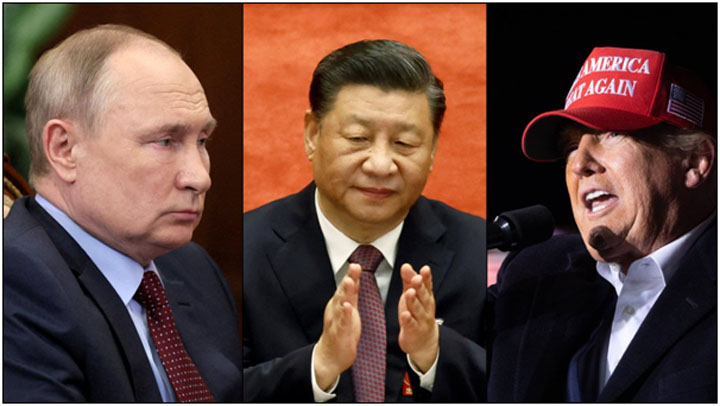
The coming decade will pave the way for how the century will be shaped. America risks hollowing its own message if it continues to purge generals for dissent and blur the line between politics and profession. Allies will hedge; adversaries will probe. Russia will remain defiant, but attrition has limits. A crowbar can smash, but it cannot rebuild, and Moscow may find its narrative power fading if endurance turns into exhaustion. China is best placed for the long game. Its propaganda is patient, its information war disciplined, its economic outreach tied to its story of civilisational rise. Together, Russia and China reinforce each other. The American century will decline and give way to a multipolar world order.
The likeliest future is a fractured order. The U.S. will still dominate in Europe and with parts of Asia. China will expand its influence across the Global South. Russia will remain disruptive along Europe’s edge. Power will not be measured by who has the largest arsenal, but by whose narrative commands belief in different theatres.
Strategic messaging is no longer an accessory to policy. It is policy. Trump’s Quantico theatre, Putin’s crowbar metaphor, and Beijing’s “USA vs China” clip are not isolated moments. They are weapons, firing not shells but narratives. The question is whether the United States can repair its credibility before its rivals’ narratives become the world’s accepted truth.
India’s Strategic Crossroads: Reading Between the Lines
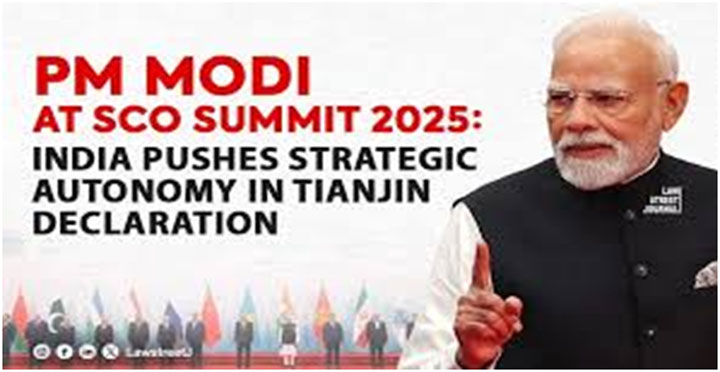
For India, the narrative battle among Washington, Moscow and Beijing is not distant. It touches every strategic choice New Delhi makes. Trump’s theatre, Putin’s crowbar metaphor and China’s quiet inevitability all create pressures that spill into India’s space. The real risk is being pulled into stories others want to tell. If India is seen only as a counter to China, a bridge for Russia or a reluctant partner of the West, its own voice will fade. Strategic autonomy must be more than a slogan. India needs to tell its own story with clarity — as a civilisational state, an economic force and a security provider in the Indo-Pacific. It also needs stronger tools of communication and diplomacy to shape debates rather than react to them. By keeping its message consistent and its choices independent, India can stay the author of its own future.
ABOUT THE AUTHOR
 Lieutenant General A B Shivane, is the former Strike Corps Commander and Director General of Mechanised Forces. As a scholar warrior, he has authored over 200 publications on national security and matters defence, besides four books and is an internationally renowned keynote speaker. The General was a Consultant to the Ministry of Defence (Ordnance Factory Board) post-superannuation. He was the Distinguished Fellow and held COAS Chair of Excellence at the Centre for Land Warfare Studies 2021 2022. He is also the Senior Advisor Board Member to several organisations and Think Tanks.
Lieutenant General A B Shivane, is the former Strike Corps Commander and Director General of Mechanised Forces. As a scholar warrior, he has authored over 200 publications on national security and matters defence, besides four books and is an internationally renowned keynote speaker. The General was a Consultant to the Ministry of Defence (Ordnance Factory Board) post-superannuation. He was the Distinguished Fellow and held COAS Chair of Excellence at the Centre for Land Warfare Studies 2021 2022. He is also the Senior Advisor Board Member to several organisations and Think Tanks.

